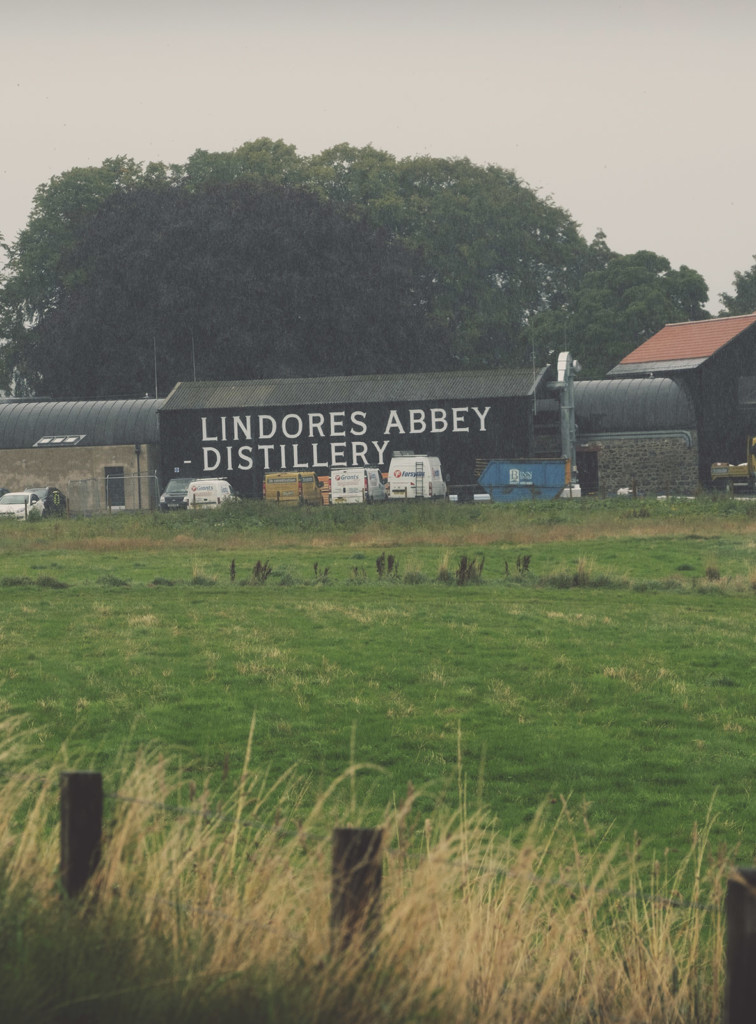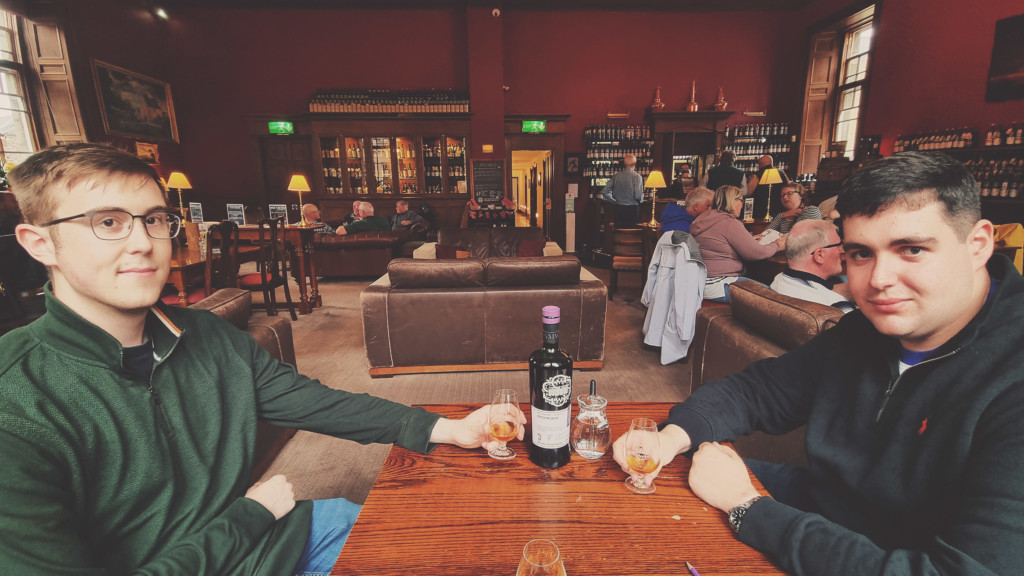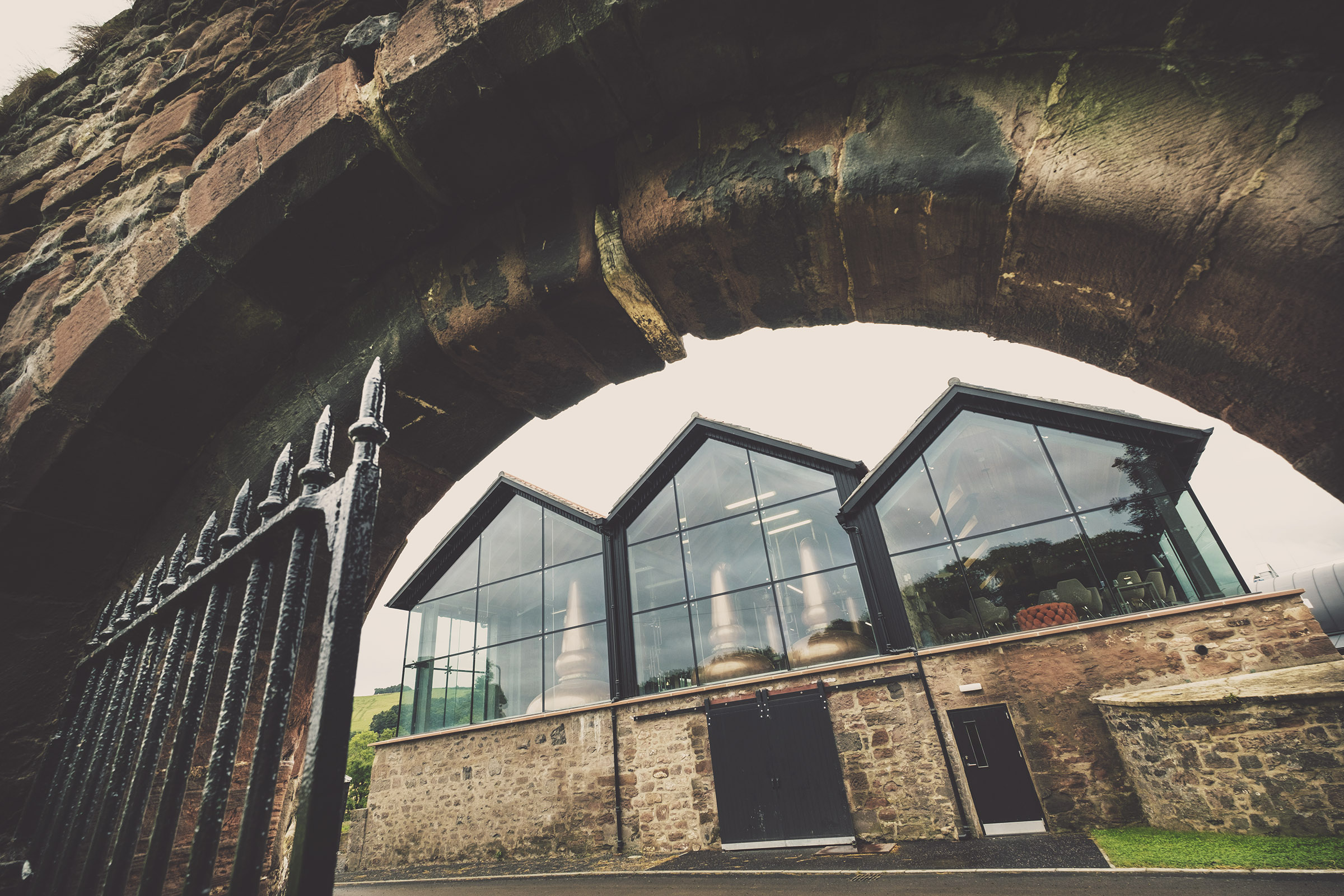November Outturn 2023 and September Unfiltered #85 Article
As with each new Society cask, we are all unique but alike in form. We are shaped by the course of history, grand and personal. The alchemy of who we are is the product of the people, places and events that flow through our lives.
The River Tay takes its name from Ancient Celtic ‘Tausa’ which means ‘strong one’ or ‘flowing’. Famed for its fly fishing, Scotland’s longest river, pulses down from the Highlands until it pours through the Firth of Tay into the North Sea. On its banks, much of the history of Scotland and of its favourite spirit has been shaped by the great and good. Kings, crowned atop Scone’s Stone of Destiny, ruled from the medieval capital of Perth. Centuries later, Victorian captains of industry in Perth and Dundee grew rich plying their wares around the globe. Entrepreneurial grocers Matthew Gloag, Arthur Bell and John Dewar mastered the art of blending. Their successors shipped these blends to distant ports. Whilst the whisky barons brought Perth prosperity, they owed a debt to a then-unknown monk who had lived down the Tay 400 years earlier.
 East of Perth, the small town of Newburgh, looks across the Firth of Tay to Dundee. The Tironensian Order of Monks founded an Abbey here in 1191. Renowned for its orchards and sitting on the site of a 6th-century Celtic church, Lindores Abbey lay on a major crossroad. Kings and the famed William Wallace passed this way. It is here that Friar Jon Cor, commissioned by King James IV, distilled the first ‘whisky’ ever to be recorded in Scotland’s long history.
East of Perth, the small town of Newburgh, looks across the Firth of Tay to Dundee. The Tironensian Order of Monks founded an Abbey here in 1191. Renowned for its orchards and sitting on the site of a 6th-century Celtic church, Lindores Abbey lay on a major crossroad. Kings and the famed William Wallace passed this way. It is here that Friar Jon Cor, commissioned by King James IV, distilled the first ‘whisky’ ever to be recorded in Scotland’s long history.
All the while townsfolk in Newburgh went about their business next to or on the River Tay. Between the wars, Thomas Muir piloted his boat across the firth’s currents between the wars, and from Dundee. His son Gordon ran Lindores Farm milk to the town during WWII. Long after the Abbey’s ruin, Newburgh’s townsfolk continued to harvest its fields. The youngest Muir found work on Bell’s bottling line. By the 1960s Perth’s whisky jobs drained away. Young Beth, successive waves of Scots, Young Beth sailed off land to make a home and have a family. She never lost her love of Scotland.
Many an expat Scot has been spirited home nursing a dram. Nothing evokes such powerful memories as a great cask-strength whisky. Little wonder distillers around the world sought to express themselves by producing a local spirit.
From the start, colonists distilled whisky in Australia, despite government restrictions. Challenged whilst fishing by his Scottish father-in-law in 1989, Bill Lark, successfully lobbied for distillation laws to change. Experiments with local peat saw Lark craft a spirit redolent of the Tasmanian highland bush inspiring a generation of distillers to create their expression of Australian whisky.
In 2021 the Society affirmed Australia’s place in whisky firmament. Led by Matt Bailey and Andrew Derbidge, casks from a Melbourne and Sydney distillery were selected. Casks 147 and 148 were added to role call. Each outturn from these casks has been met with overwhelming demand.
In the years since my last visit to Scotland, the turbulent course of history has transformed the world. Our plan for a 2020 family trip, instead directed our journey in 2023. In 2015, I shared a dram with Drew Mackenzie-Smith, custodian of the Lindores Abbey ruins, and talked about his plan for a new distillery. On my return, I had the prospect of visiting the distillery to look forward to. This time I also had an Australia Society cask to share.
On my way north I visited the Vaults for the first time. I was struck by how Leith was like so many ports, a place of last goodbyes and promises of new hopes over the horizon. On sharing 148.2 Kirsch Me Quick with members Ronan, Sam and Michael I was pleased with their positive reception. “It’s the perfect blind. Who would guess a 3-year-old would be so complex.” It doesn’t take long to feel at home with the warm welcome at the Vaults.

Travelling north, my pilgrimage complete, the new Lindores Abbey Distillery was so much more than I could have imagined or hoped for. It would have been easy for Mackenzie Smith to lock the distillery into a permanent homage to a distiller from half a millennium ago. Rather, the distillery pays its respects to the past but aims to create a future for Newburgh and its people.
Over a glass of 148.2 we talked of new whiskies, Scottish and Australian, overlooking the Abbey ruins from the distillery’s Legacy Bar. Drew suggested that we embrace the idea of a world of whiskies as a kaleidoscope of expressions, each valuable in their own way.
Lindores Abbey Distillery lies on a gentle sweep of fertile land which ends at the edge of the Firth of Tay. It’s overlooked by Newburgh’s manicured graveyard where my grandparents and now my mother lie. Below, Newburgh’s orchards and fields of barley continue to bring forward nature’s bounty. Whisky now flows again where Friar Cor once tended to his still. Beyond this, a river runs into the sea taking us to distant lands.
Postscript:
The day an Australian whisky was first tasted on the site of Scotland’s first recording of whisky distillation marked the 200th anniversary of the Whisky Excise Act which transformed the whisky industry. Also next to a canal in Falkirk, after 30 years of silence, Rosebank distilled anew.
Scotland’s longest river was once better known as the lifeblood of a burgeoning whisky industry in the late 19th century.
This article is featured in November 2023 Outturn — bottles will be available to purchase on Friday the 17th of November at midday AEDT exclusively to members of The Scotch Malt Whisky Society. Not a member? Click here to learn more about the world’s most colourful whisky club.








